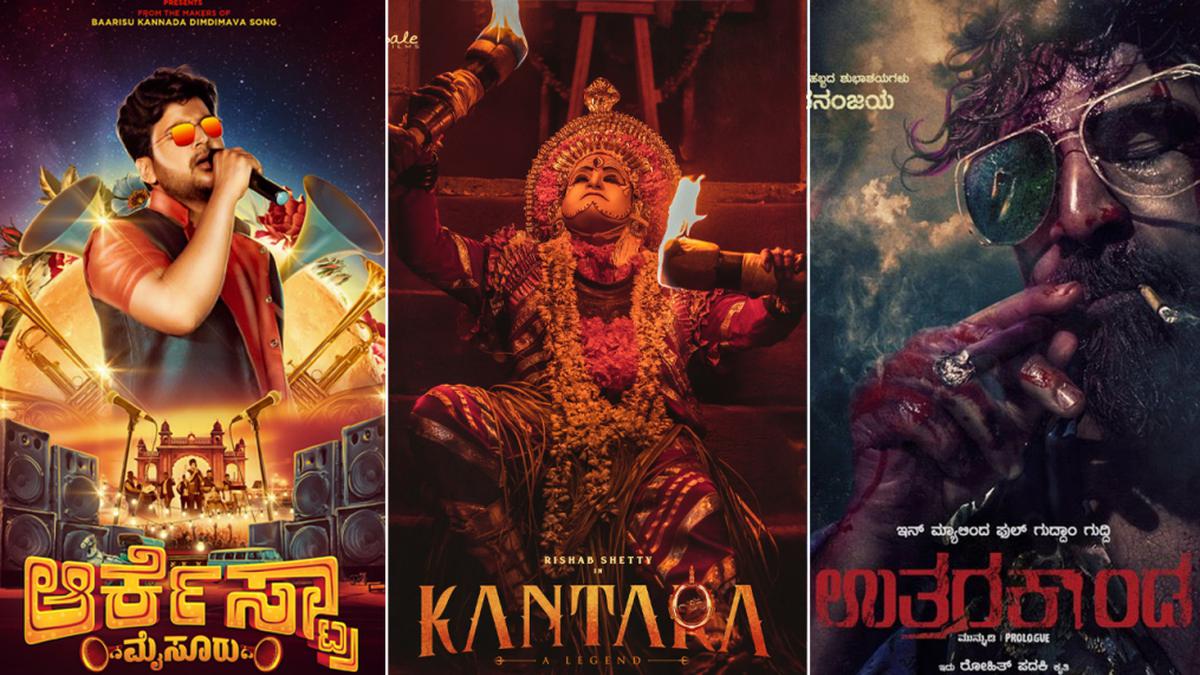
Why Kannada celluloid needs more local stories
The Hindu
The three Shettys — Rakshit, Raj and Rishab — have championed stories of Dakshina Kannada, but other regions of the state lack a solid representation in Kannada films
In the final shot of the trailer of Ulidavaru Kandante (2014), Rakshit Shetty kicks down a door before his name arrives on-screen under the writer-director credit. Looking back, it’s undeniable that the Rashomon (Akira Kurosawa’s 1950 classic)-inspired film also opened the doors to establishing the coastal culture in mainstream Kannada cinema.
A cult favourite today, Ulidavaru Kandante was a neo-noir gangster film set in Udupi, Karnataka. This highly-rooted film gave birth to more stories from Dakshina Kannada, as Rishab Shetty, Raj B Shetty, and Anup Bhandari established themselves in the mainstream field.
S Shyam Prasad, senior film writer, explains why. “Kannada films, for a long time, were basically ‘Mysore films.’ It takes a long time to recourse history,” he observes. “All regions of Karnataka got integrated into a single entity in 1956, which was named Mysore State. The Kannada talkie movies had already started in 1934 and were Mysore-based. The early talkie era based in Madras had mainly Old Mysore Brahmins. Even when the film industry shifted to Bengaluru, the films still had a strong representation of Old Mysore.”
The representation of a region in a film depends on how close the story is to the personal life of the filmmaker. “S Siddalingaiah was the master of portraying village life, probably due to his real-life experiences,” points out Shyam. “His most popular films, Bangaarada Manushya, Bhootayyana Maga Ayyu, and Doorada Betta, showcased the village life from the Old Mysore Region. So, the director’s experience plays a big role in representing the local themes and language in a film.”
Off-beat or parallel movies have depicted the way of life present in several small towns and districts of Karnataka. Girish Kasaravalli’s Dweepa mirrored the life of people in Sagara in Shivamogga. One could hear the dialect of North Karnataka in Sundar Krishna Urs’ Sangya Balya (shot in Belagavi).
ALSO READ:The resurgence of Kannada parallel cinema
In the present-day too group of parallel cinema makers aren’t shy of setting films in the ethos of their hometowns. Natesh Hegde’s Pedro, about anoutcast who faces opposition from an entire community, is set in Natesh’s village in the Western Ghats, while Utsav Gonwar’s Photo shows the fate of a Raichur boy in the wake of the migrant exodus during the Covid-19 outbreak.





















 Run 3 Space | Play Space Running Game
Run 3 Space | Play Space Running Game Traffic Jam 3D | Online Racing Game
Traffic Jam 3D | Online Racing Game Duck Hunt | Play Old Classic Game
Duck Hunt | Play Old Classic Game











